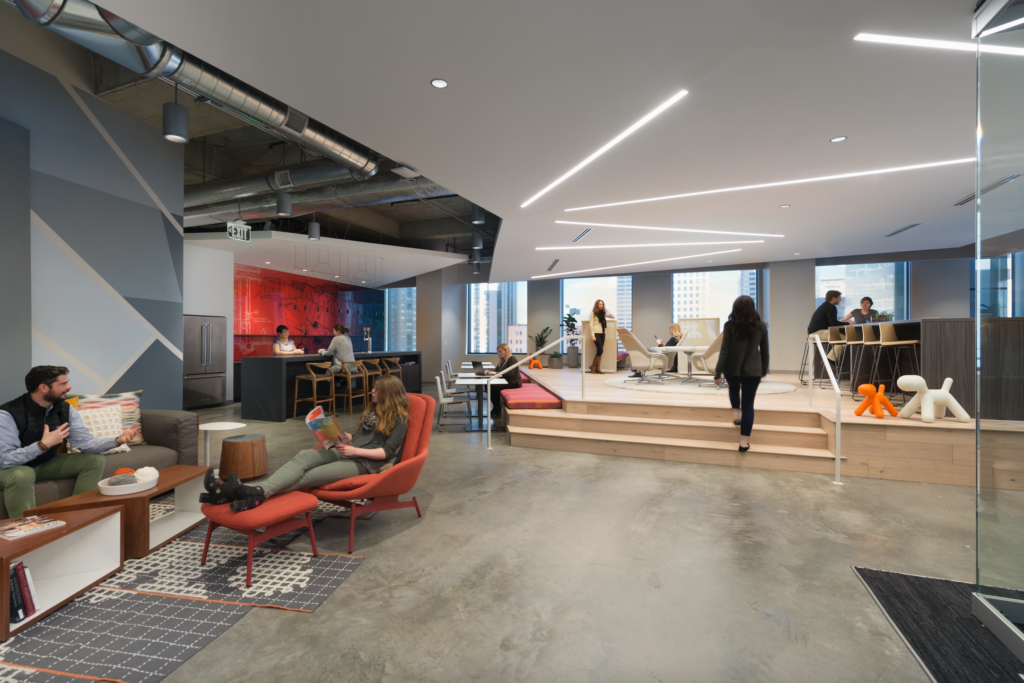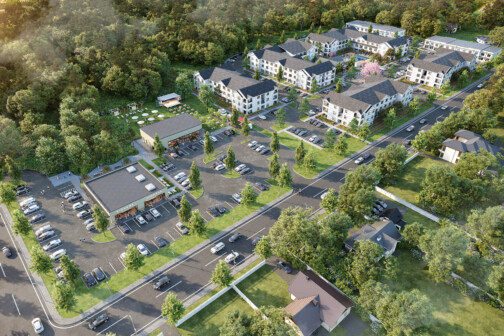Prioritizing why we come together will elevate our work and help our organizations thrive. The workplace is designed to foster company culture, reinforce values and identity, support engagement, and facilitate collaboration. Throughout the last few years, our world has adapted to learn how to manage business operations virtually, but the human elements have suffered. Relationship building and collegiality, mentorship, and celebration are just some aspects folks are missing in remote working roles.

With so many competing factors that affect enterprise functions and workplace design, the designers at DLR Group have found that direct interaction with stakeholders at all levels helps create clarity to drive meaningful decisions. So, how do we bring our teams together to help while the world continues to evolve and innovate?
To get to the real “why” of the workplace, we must reflect on company values. To have meaningful discourse, workplace leaders must explore and discover the values that are most important to the company. There is no prescriptive list that works for each organization, and thoughtful discussions need to be done to get to the essence of what the company stands for. Who are you as an organization? What is the core purpose of your work? How do you best serve your clients? What are your growth plans?
Getting those items on the table allows us to frame discussions around nine key areas:
- Culture + Identity: A project can use design to celebrate its history and context. Building a powerful sense of place often speaks to the identities of occupants and surrounding communities. Other aspects of culture and identity address inclusion and a sense of belonging which might lead to a discussion around organizational transformation and how the structures of your organization can change to support broader goals.
- Health + Well-Being: A project’s design can promote mental, physical, and emotional well-being and support users in accomplishing their personal goals. There are several factors connecting to health and well-being: Is it important for your project to directly connect users to experiences related to nature? Does your project need to connect users to fitness-related activities or movements? Does your project promote healthy food choices or policies?
- Materials Impact: Building materials impact human well-being, carbon emissions (both embodied and operational), and cost over the course of the materials’ lifetime. How important would it be to promote material transparency around its ingredients or even where the material comes from? How do the choices around materials in the built environment impact the local economy or ecosystems along the supply chain?
- Energy + Water: A holistic approach to energy and water management includes reducing cost and consumption before working to add renewable energy generation to your project. Building systems play a critical role in meeting your project’s energy goals, and a discussion around systems selection and maintenance is a critical piece in the energy puzzle. Water encompasses water quality, water and stormwater management practice, hydrological balance, and water culture context in a community. How can your project ensure a reliable water supply regardless of external circumstances or systems? Would your project positively impact a larger connection to regional water systems? Finally, would it be important to know if the quality of your drinking water is safe and where it comes from?
- Indoor Environmental Quality: A project’s indoor environment has a direct correlation to the health and well-being of those who occupy spaces within it. The quality of the indoor environment is determined by many factors, including acoustics, thermal comfort, air quality, and visual comfort.
- Outdoor Environmental Quality: Projects can use their outdoor spaces to build community, restore ecology, and create a strong sense of place. One might think about how natural infrastructure could help mitigate flooding or filter air pollutants or reduce the impacts of the heat island. What about your project that might improve the outdoor environment not only for your project but for your neighboring communities?
- Resiliency: Intentional design and planning can support the ability of buildings, sites, individuals, and communities to respond to, withstand, and recover from stressful or adverse situations. Resiliency is rooted in identifying your vulnerabilities against climatic or manufactured disruptions. How can you create a clear plan of action for your organization for continuity of operations? What might be the economic impacts of disruption and what do you need to plan to ensure economic vitality when faced with unexpected events? Finally, what aspect of your project needs to address individual resiliency and support during stressful situations?
- Access + Mobility: This encompasses transit-orient design, providing transportation options, decarbonizing transportation, and improving walkability and safety. A potential example of this value applied might include seeing electric car charging stations or programs centered around the experience of alternative transit options.
- Procurement + Operations: Projects can establish practices that support safety and security, efficient operations, supplier diversity, and responsible procurement and disposal of goods. Procurement and operations are often the keys to connecting broader project goals together and making them successful long-term.
While these topics include elements of green design, it’s important to view sustainability holistically and in the context of other considerations. Determining sustainability priorities can help determine which, if any, third-party rating or certification system (i.e., LEED, WELL, Fitwell, Living Building Challenge, Green Globes, etc.) is best for an owner or tenant.
As organizations advance efforts to document and report their progress on environmental, social, and governance (ESG) measures, defining each of these priorities will create a roadmap toward better organizational results and more equitable individual outcomes.
Every company has its own diverse set of factors leading professionals to return to workplace environments in some form. It is up to Workplace Leaders and Designers to convene corporate real estate decision-makers and drive the conversation to ensure alignment on a company’s core principles and the reasons behind why we come together.
Get the D CEO Real Estate Newsletter
Author






